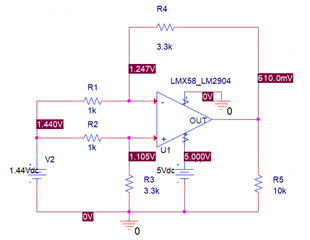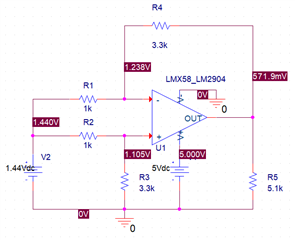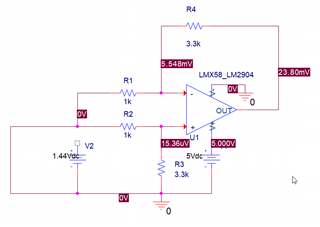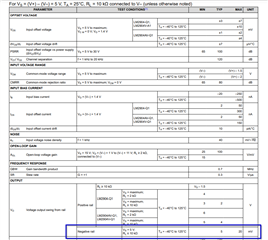Other Parts Discussed in Thread: LM2904B-Q1
I have a question about LM2904AVQDRQ1 ‘s application of Differential Amplification as the picture below.
The transport formular is Vout=3.3*(V+-V-)
The Vout should be near 0V when V+ and V- are equal to 1.44V. But the simulation result and test result both are about 0.6V. The Vout voltage will decrease with R5 decreases.
And the Vout_negative can be 20mV based on the datasheet.
The Vout is near 0V when connect V+ and V- both to ground.
Could you please tell me the reason?
Looking forward to your reply!
Simulation1:V+ and V- both connect to 1.44V.
Simulation2:V+ and V- both connect to 1.44V with R5=10k

Simulation3:V+ and V- both connect to 1.44V with R5=5.1k

Simulation4:V+ and V- both connect to ground

Vout_negative voltage level in datasheet:

Kind Regards
Imelda

